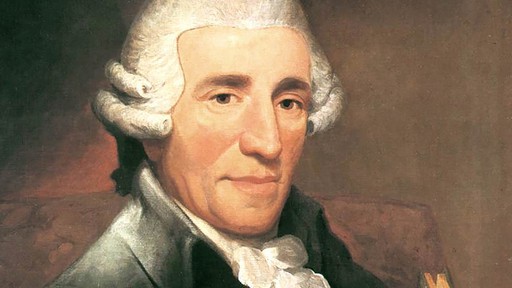
Symphony No. 85, La Reine

(Duration: 21 min)
Franz Joseph Haydn became a court composer for Austria’s wealthy Esterházy family in 1761, and four years later he was put in charge of all the court’s vast musical activities. His patron, Prince Nikolaus Esterházy, was an avid musician and a true supporter of the arts, but he kept his Kapellmeister on a tight leash, especially during the long stretches of time spent at an isolated summer palace where the musicians had to produce an endless stream of operas and other entertainment. Under those demands, Haydn later wrote, “I was forced to become original.”
In 1779, Haydn negotiated a new contract that gave him more leeway to compose and publish independently, and soon his music was attracting followers throughout Europe. One foreign admirer was a young French count, Claude-François-Marie Rigolet, who commissioned six symphonies that Haydn composed in 1785 and 1786. These “Paris” Symphonies earned Haydn the handsome sum of 25 louis d’or each, plus additional fees for publication. (By comparison, Wolfgang Amadeus Mozart earned only 5 louis d’or for his “Paris” Symphony from 1778.)
Haydn’s “Paris” symphonies capitalized on the large orchestra employed for the Concerts de la Loge Olympique, conducted by Joseph Bologne, Chevalier de Saint-Georges. In the Symphony No. 85, the slow introduction references the classic French overture with its majestic dotted rhythms and unison statements, details that show Haydn’s awareness of his intended audience. The Vivace body of the movement is a model of economy, with a small collection of themes that gain intrigue when placed in unexpected contexts, such as a surprise detour to F-minor on the way to the anticipated key of F-major.
The second movement Romanza was another local crowd-pleaser, with a set of variations on the French folksong La gentille et jeune Lisette. The Menuetto makes a game of chortling grace notes and offbeat accents, and its contrasting trio section strikes up the unlikely pairing of bassoon and violins over pizzicato. The same pairing returns to begin the Presto finale that bounds along with a particularly active and independent bass line. Queen Marie Antoinette purportedly loved this symphony the most of Haydn’s offerings for Paris, earning it the nickname “La Reine” (“The Queen”).
Contribute Now.
We need your support to continue sharing music with people everywhere, completely free of charge.